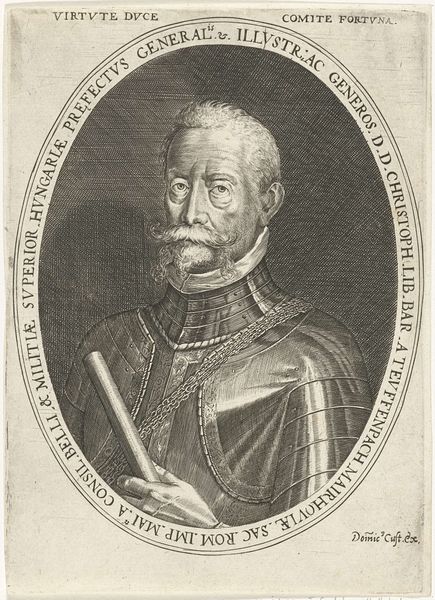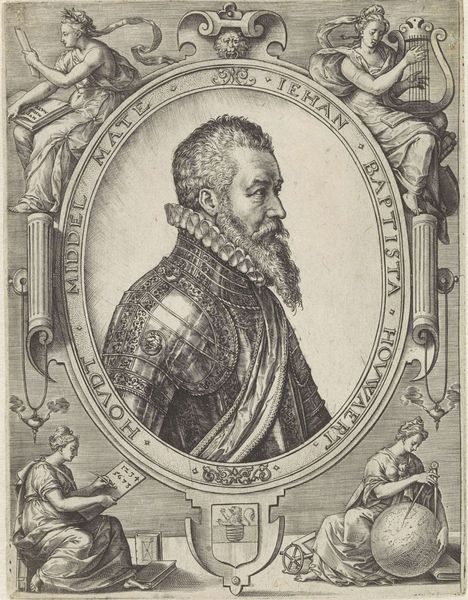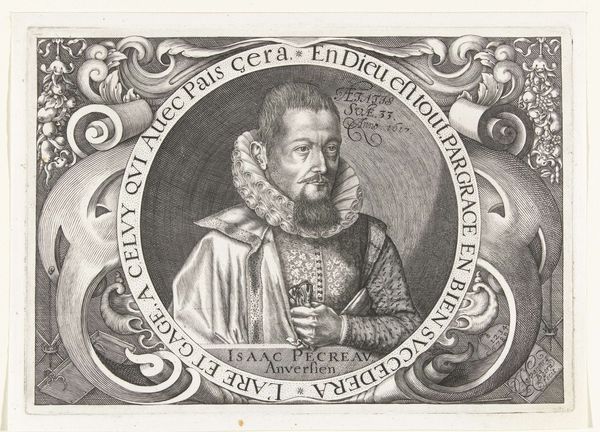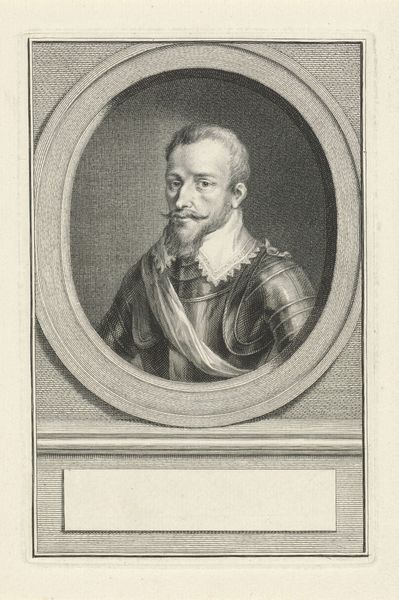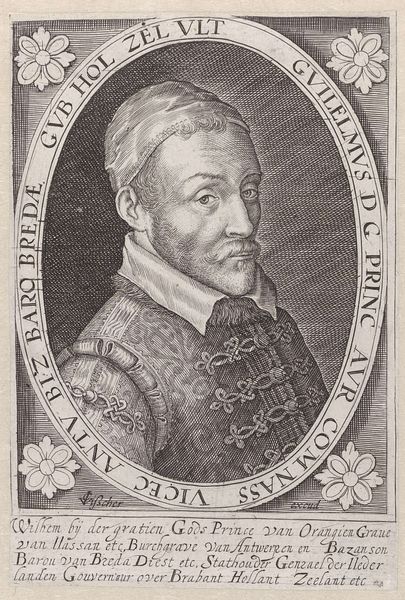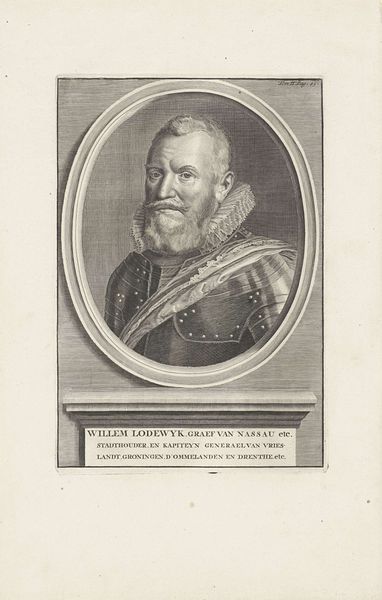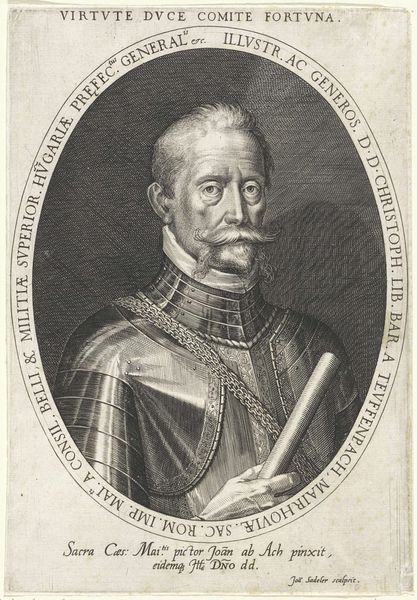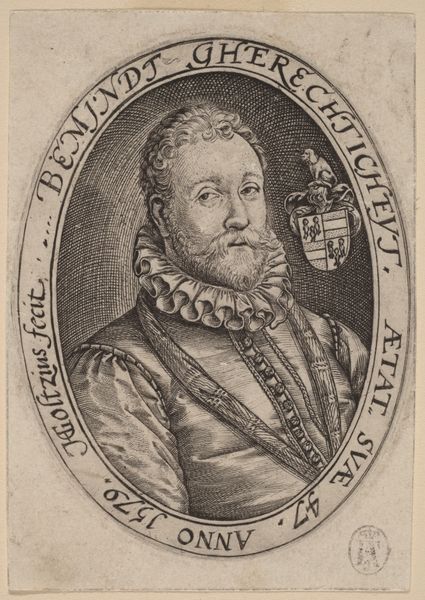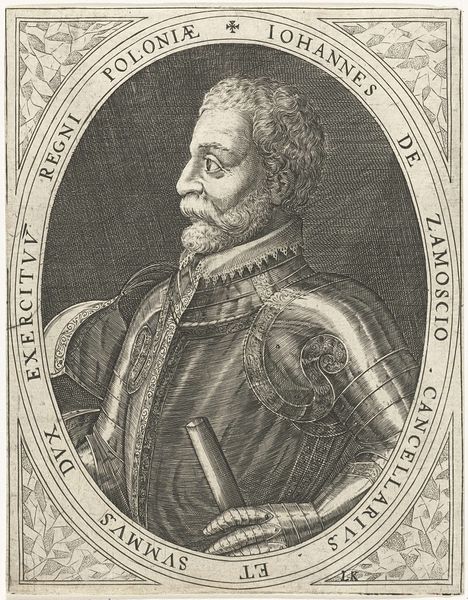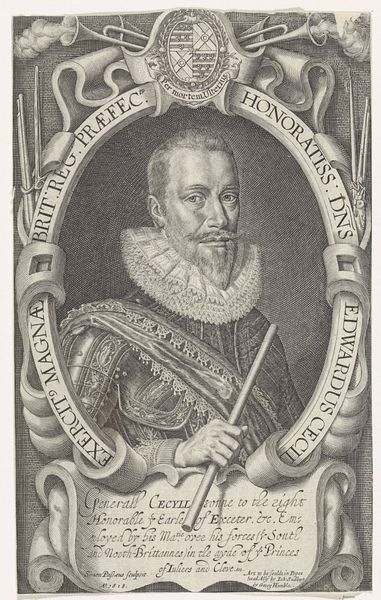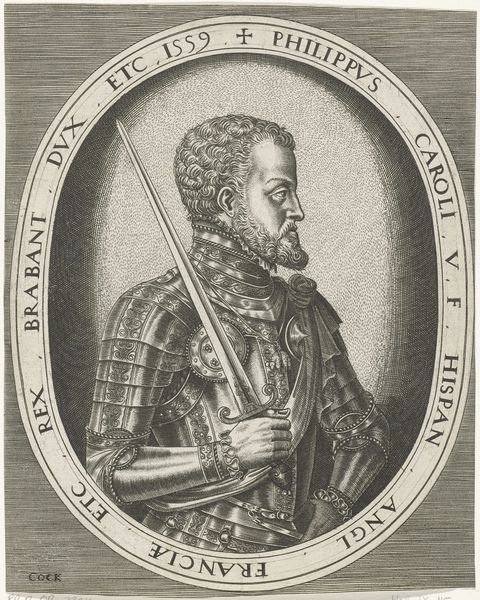
engraving
#
portrait
#
baroque
#
history-painting
#
engraving
Dimensions: height 355 mm, width 250 mm
Copyright: Rijks Museum: Open Domain
This is Adriaen Haelwegh’s portrait of Ferdinando I de Medici, made with engraving. Haelwegh, who lived from 1637 to 1761, was working in a time and place in which portraiture served significant cultural functions. Consider the way Ferdinando is represented here. His armor suggests military might, but he's also framed by decorative elements – ribbons and garlands – suggesting a ruler who appreciates beauty and luxury. The inscription emphasizes his lineage, connecting him to the power of his parents. This is more than just a likeness; it’s a carefully constructed image of power and authority. Images like this tell us a lot about the social role of art. Portraits of rulers were carefully designed to project an image of power and legitimacy, supporting the Medici family’s political ambitions. To understand this image fully, historians would need to consult a wide range of resources, from family records to studies of costume and heraldry. The meaning of art is always contingent on its social and institutional context.
Comments
No comments
Be the first to comment and join the conversation on the ultimate creative platform.
